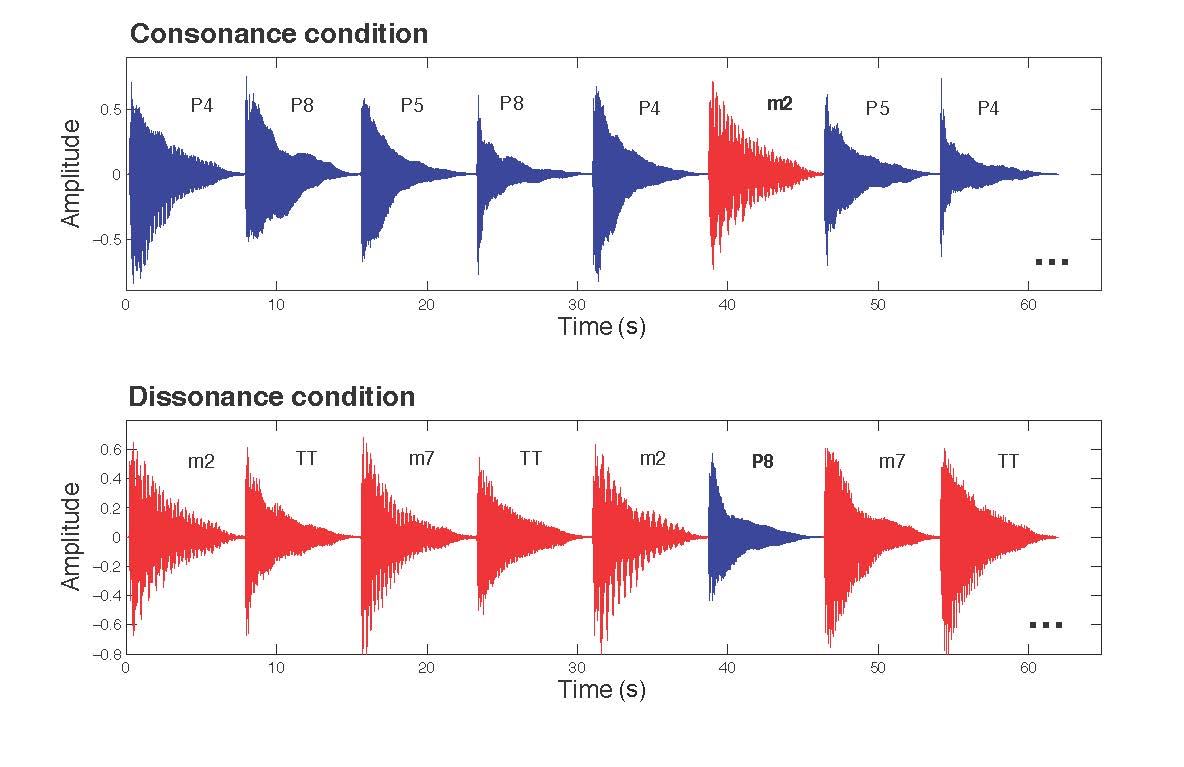A study establishes the neural bases of musical language processing in humans
The research is being carried out by Juan Manuel Toro, ICREA researcher at the Center for Brain and Cognition of the DTIC and principal investigator of the project Biological Origins of Linguistic Constraints, thanks to the help of the European Research Council. The study was published in June in the journal Neuropsychologia.

Knowing which are the human species’ inherent components in the processing of language and music is the line of research being carried out by Juan Manuel Toro, ICREA research professor at the Department of Information and Communication Technologies (DTIC) and head of the research group on Language and Comparative Cognition (LCC) at UPF’s Center for Brain and Cognition, in the framework of the starting grant awarded by the European Research Council to carry out the project: Biological Origins of Linguistic Constraints (2013).
“One very interesting aspect is that we humans tend to perceive consonant chords as being pleasant and dissonant ones as unpleasant”
In music, harmony is the study of the sounds that occur simultaneously, that is to say, chords. In a harmonic interval, two sounds that are heard at the same time can produce two different sensations in the listener: consonance and dissonance. As principal investigator of the project Juan Manuel Toro explains: “one very interesting aspect is that we humans tend to perceive consonant chords as being pleasant and dissonant ones as unpleasant”.
In non-human animals, consonance is shown not to have any effect on the learning of abstract patterns and that they learn the patterns with the same ease both with consonant and dissonant chords.
In previous studies, the same researcher showed that humans learn abstract patterns more easily with the help of pleasant consonant chords than with annoying dissonant chords. By contrast, in non-human animals, consonance is shown not to have any effect on the learning of abstract patterns and that they learn the patterns with the same ease both with consonant and dissonant chords. A new study led by Juan Manuel Toro, in conjunction with Paola Crespo-Bojorque and Júlia Monte-Ordoño, members of his team, has just been published this month in the journal Neuropsychologia and presents the neural bases of this difference in perception of abstract patterns between humans and other non-human living beings.
“We have seen that musicians have stronger, more rapid responses in the face of changes in consonance and dissonance than people not familiar with music”
In this new study, the experimental design consisted of presenting highly trained musicians and untrained listeners with musical intervals composed of a dissonant chord, and dissonant chords interrupted by consonant chords. Thirty-two volunteers participated, sixteen of whom were experienced musicians with several years of formal musical training in Western tonal music, and the other half of the participants were not musicians.
“Our results show the underlying neural bases in the advantages of the processing of consonance over dissonance in humans”
The neural responses related to the stimuli presented (event-related potential, ERP) that the authors recorded via electroencephalography (EEG) showed that changes in consonant sequences are easily detected, whereas changes in dissonant sequences are not.
 Moreover, Paola Crespo, first author of the work, adds: “we have seen that musicians have stronger, more rapid responses in the face of changes in consonance and dissonance than people not familiar with music”, hence concluding, in the light of these results, that musical training prepares the brain to better detect these changes. Hence, “our results show the underlying neural bases in the advantages of the processing of consonance over dissonance in humans”, the researchers explain.
Moreover, Paola Crespo, first author of the work, adds: “we have seen that musicians have stronger, more rapid responses in the face of changes in consonance and dissonance than people not familiar with music”, hence concluding, in the light of these results, that musical training prepares the brain to better detect these changes. Hence, “our results show the underlying neural bases in the advantages of the processing of consonance over dissonance in humans”, the researchers explain.
Reference work:
Paola Crespo-Bojorque (pictured), Júlia Monte-Ordoño, Juan M. Toro (2018), “Early neural responses underlie Advantages for Consonance over Dissonance”, Neuropsychologia.https://doi.org/10.1016/j.neuropsychologia.2018.06.005.
